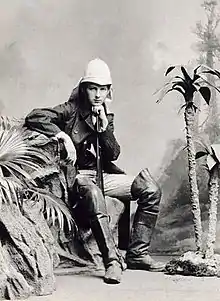Kukurá language
Kukurá (Cucurá, Kokura) is a spurious language, fabricated by an interpreter in Brazil.
| Kukurá | |
|---|---|
| Created by | a Kainguá interpreter for A. V. Frič |
| Date | 1901 |
| Purpose | fraud |
| Language codes | |
| ISO 639-3 | None (mis) |
| Glottolog | (insufficiently attested or not a distinct language)kuku1286 |
History
When Alberto Vojtěch Frič visited Rio Verde, Brazil, in 1901 he took with him a Kainguá Indian called Guzmán who said he spoke the language of the local Chavante people.
A word list was published for the so-called Kukurá language, thought to be an isolate, in 1931.
In 1932 Curt Nimuendajú, who had visited the Rio Verde in 1909 and 1913, showed that Guzmán's wordlist consisted half of fake words and half of mispronounced Guaraní. There was no resemblance to the Ofayé language that was actually spoken in the region.[1]
Vocabulary
Loukotka (1968) lists the following basic vocabulary items for the spurious language.[2]
gloss Kukura tongue kasti stone tatahü moon malahan house aul
References
- Campbell, Lyle; Grondona, Verónica (2012-01-27). The Indigenous Languages of South America: A Comprehensive Guide. Walter de Gruyter. p. 133. ISBN 978-3-11-025803-5. Retrieved 2013-04-24.
- Loukotka, Čestmír (1968). Classification of South American Indian languages. Los Angeles: UCLA Latin American Center.
This article is issued from Wikipedia. The text is licensed under Creative Commons - Attribution - Sharealike. Additional terms may apply for the media files.
